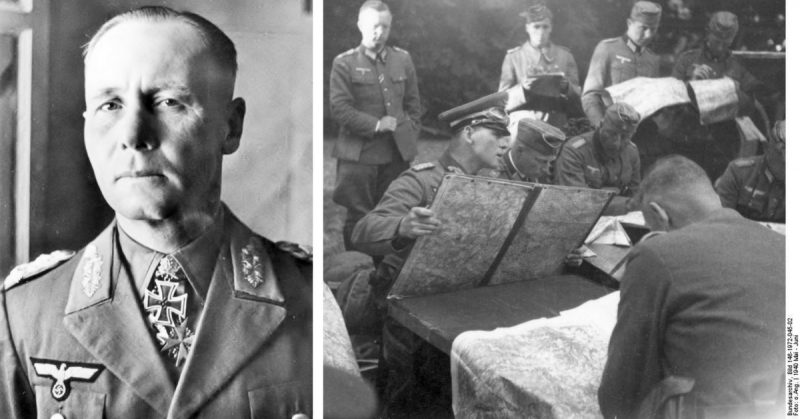Erwin Rommel is usually remembered for commanding German forces in North Africa during WWII. There, his mastery of tank combat brought surprise victories and a staunch fighting retreat.
He had already gained fame and experience as a tank commander earlier in the war, during the invasion of France.
A Favour from Hitler
A brave and decisive commander, Rommel had proved his worth leading infantry in WWI. In the crises leading up to WWII, he accompanied Hitler as part of his command staff. As such, he did not play an active role in the invasion of Poland, although he witnessed the war there.
Hitler liked Rommel both because of his character and because, unlike many German officers, he was not an aristocrat. Following the fall of Poland, Hitler asked Rommel what unit he would like to lead. Rommel requested a panzer division.
Rommel took command of the 7th Panzer Division just in time for the invasion of France. It was to be his first test as a commander of mobile forces, one he would pass with flying colors.
Day One: Calculated Risk
On May 10, 1940, the German campaign in the west began. Rather than attack France’s strong defenses on the Maginot Line, they crossed the Low Countries to reach northern France.
As part of that advance, Rommel moved with incredible speed. Taking a calculated risk, he allowed his troops to become stretched over a long distance so he could swiftly seize objectives. By the end of the first day, he was so far ahead of other divisions he could only reach them by wireless.
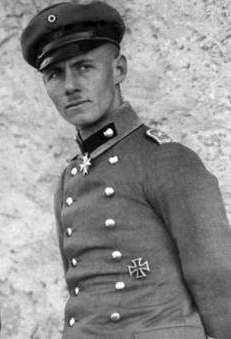
Counterattack
That night, Rommel had his engineers build a bridge over the Ourthe river; his objective for the second day. By dawn, his troops were crossing.
As he expected, the French and Belgians counterattacked. Using a repositioned group of tanks; an infantry assault through woodlands, and a carefully targeted artillery barrage, he drove off the attackers.
Rommel had held his salient. Now came the time for another advance.
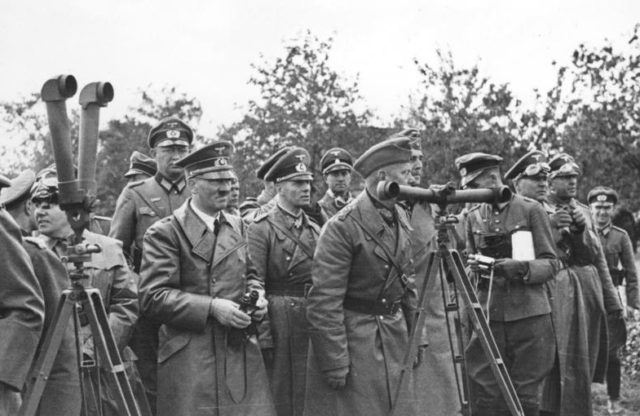
Crossing the Maas
The Allies believed they could hold a line at the River Maas for a week. Rommel proved them wrong, forcing a crossing in a single day on May 13.
Rommel’s willingness to lead from the front was an inspiration. His engineers came under fire from snipers and artillery while building a pontoon bridge. Rommel joined the men in their danger, hauling timber while up to his waist in water.
He fought with his brains as well as his heart. He had nearby houses set on fire so the smoke would provide cover for his engineers. He also assembled a group of panzers on the riverbank to bombard the French snipers, forcing them to give up.
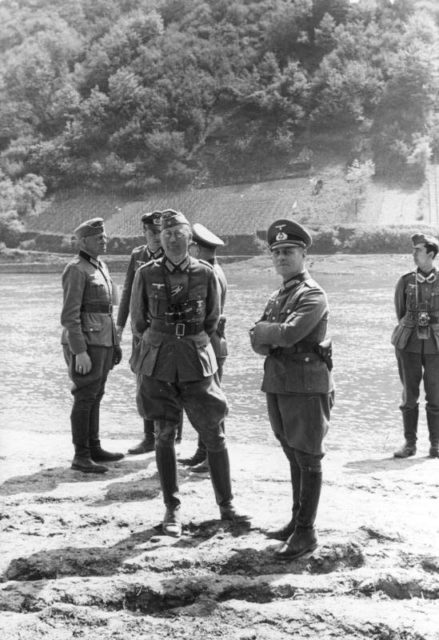
The Ghost Division Breaks Out
Having created a bridgehead on the far side of the Maas, Rommel held it against Allied armored counter-attacks. Finding that many of his guns could not pierce the enemy armor, he had them target wheels and tracks. His own panzer was hit, and he was injured, but he showed no signs of giving up the fight.
With the Allied armor defeated, he broke out of the bridgehead. Splitting the 7th Panzer Division in two, he took command of one column. They drove deep behind French lines, using blitzkrieg tactics to shock and bewilder the enemy. Their sudden appearance miles behind enemy lines earned them the name “Ghost Division.”
The Maginot Line
Their next objective was the town of Avesnes. It lay behind the Maginot Line, forcing Rommel to face the Line’s tough defenses for the first time.
There, Rommel proved he could fight conventional battles, not just fast advances. He used WWI artillery techniques to pave the way, then led a combined group of armored fighting vehicles and assault pioneers against the French defenses in a night attack. The pioneers cut routes through the barbed wire for the tanks. The tanks smashed the French concrete emplacements with their guns. The infantry followed through, finishing off the dazed French.
It was a stunning success, following which he was awarded the Knight’s Cross of the Iron Cross.
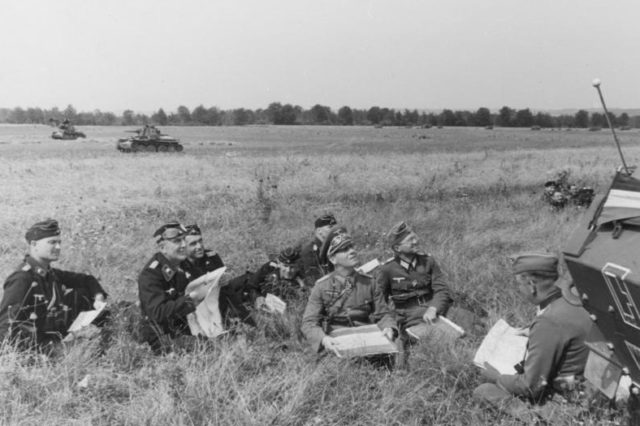
Meeting the British
After being held for several days at the Canal du Nord, Rommel launched an attack across the canal at 0140 on May 20. Again, he used two columns, heading one of them himself.
Across the canal, Rommel encountered the British Expeditionary Force (BEF) for the first time. The BEF troops around Arras put up a fierce fight. Rommel was nearly captured when French tanks cut off his escort group. He directed artillery fire against the British to halt one of their charges.
Despite their resistance, the noose was tightening around the Allies at Dunkirk.
The Spearhead
After a pause, the army was once more sent forward to crush the remaining troops around Dunkirk. With the focus of attack having shifted, Rommel became the leader of a panzer spearhead that was the main German thrust in the area.
On the night of May 27, he launched an attack that cut the Lille-Armentières road, drove off counterattacks, and shattered enemy morale. Soon, hundreds of soldiers were surrendering to his men.
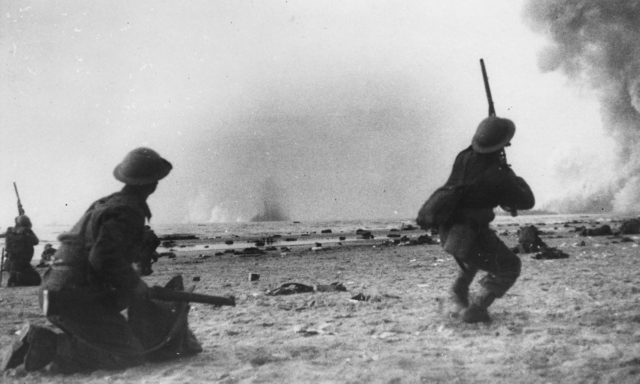
Driving South
As the British boarded ships to escape from Dunkirk, Rommel was redirected to the conquest of France. The 7th Panzer Division swept south along the Channel coast. They brushed aside opposition and forced the surrender of the Anglo-French garrison at St Valéry.
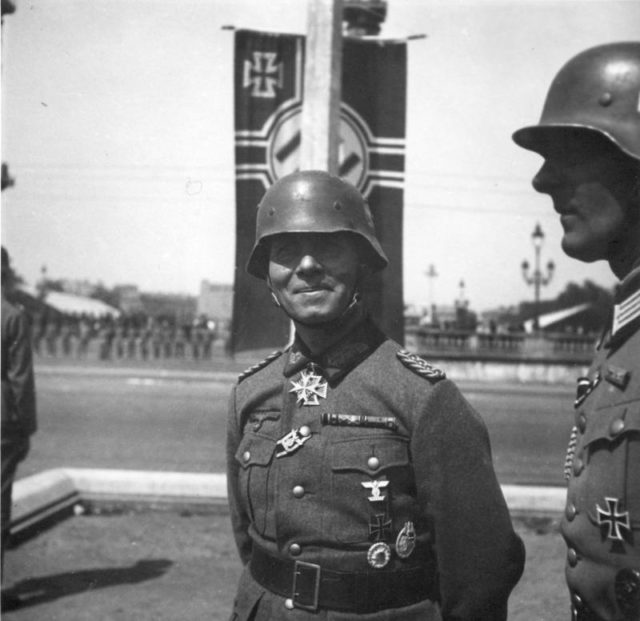
Rommel finished his time in France in spectacular style. In a single day, his division drove 240km, with Rommel leading in his command tank. They captured the naval base at Cherbourg.
Rommel had proven that he was a bold, decisive, inspiring commander and a master of armored warfare. His fame spread beyond the army.
Germany expected great things of Rommel. The nation would not be disappointed.
Source:
James Lucas (1996), Hitler’s Enforcers: Leaders of the German War Machine 1939-1945
